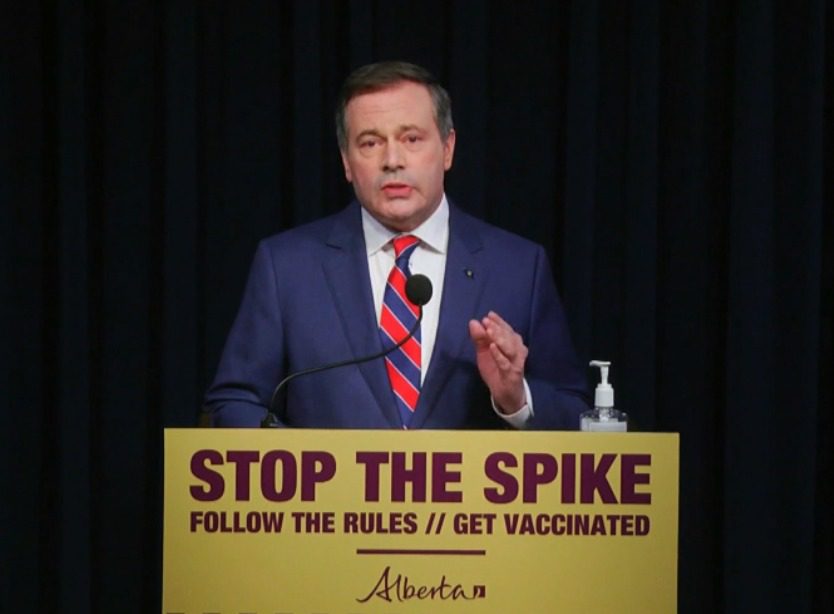It's one thing when a political opponent calls the provincial premier a coward. It's a whole different thing when that premier receives a death threat.
Politics in Alberta is descending into a chaos of recriminations, pleas, overheated rhetoric and fear mongering over the government's handling of Covid. The question now is whether Premier Jason Kenney can get a grip on the body politic and throttle it into obeying his latest rules to stop the pandemic.
After months of pussy-footing around his "lives and livelihoods" campaign to find a middle ground between public health and the economy, Kenney has switched gears and changed his mantra to "stop the spike".
But it may be too late to get Albertans on the path to saving their own healthcare system. And it appears to be too late to salvage Kenney's popularity. Fringe elements, including the idiot with a social media account who threatened both Kenney and his mother, will continue to rally, protest and parade around maskless no matter the latest restrictions.
As of this week, school's out til after Victoria Day. Restaurant patios are closed; recreation halted; outdoor gatherings of more than five people banned.
A cafe in the tiny town of Mirror notorious for flouting Covid regulations was shut down Wednesday morning.
The new public health orders and tougher enforcement are aimed at halting the ever escalating Covid case numbers as the province blasts to the top infection rate in Canada and the U.S.
The last straw may have been the No Lockdowns rodeo near Red Deer last weekend. It shook the premier enough for him to call out the Covid deniers. He's now using phrases like "tinfoil hat" people and conspiracy theorists.
At a Wednesday press conference he, for once, did not mention the federal government as the ultimate culprit in the province's woes.
During a Facebook livestream on Tuesday the premier said he had two messages after imposing the latest restrictions saying: "You will be executed for your crimes against humanity" and "We know where your mother lives."
While the doctors and members of the general public who have been calling for more restrictions are grudgingly praising the lockdown, they are still grumbling about the lack of consistency the premier and his caucus displayed over the last 14 months.
Last week Kenney suspended the legislature sitting saying it was too dangerous for MLAs to gather in Edmonton. At that point elementary schools were still in session, prompting teachers to call out the premier for a double standard in terms of who in the province is most at risk from Covid.
NDP Leader Rachel Notley accused Kenney of cowardice for refusing to face the music in the legislature over Covid numbers topping 2,000 new cases per day.
Some pundits are speculating that the real reason to suspend the sitting is to prevent a split in the UCP caucus from erupting under the eye of the legislature press gallery.
More than a dozen UCP backbenchers have been on record decrying Covid restrictions. The ringleader, Medicine Hat MLA Drew Barnes, has been particularly vocal. His Twitter and Facebook feed has been eerily silent for the last two days.
Most of the caucus malcontents are from rural areas. Several rural regions have been exempted from the toughest provisions of the Covid crackdown, supposedly because they have lower spread rates than neighbouring towns.
Ironically the only bright spot on the horizon for Kenney comes from the federal government. A step up in vaccine supply allowed the premier to announce the opening of vaccination appointments to every Albertan over 12 years of age.
The premier has at last delivered simple and strongly worded directions on how to defeat the spread of Covid. Whether Albertans, worn down and confused by months of his vacillation will be willing to follow the rules remains in question.
Photo Credit: CTV News






